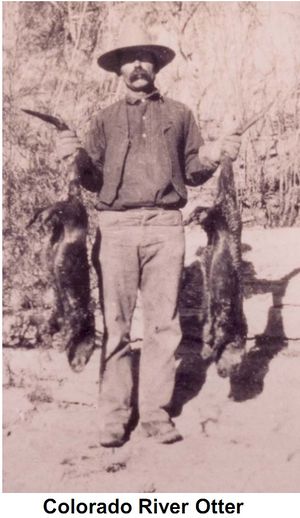Difference between revisions of "EXTIRPATED"
Cellsworth (Talk | contribs) |
Cellsworth (Talk | contribs) |
||
| Line 26: | Line 26: | ||
------------Portal list on righthand side----------> | ------------Portal list on righthand side----------> | ||
|style="width:60%; font-size:120%;"| | |style="width:60%; font-size:120%;"| | ||
| + | |||
| + | =='''Extirpated Species'''== | ||
At least 14, and perhaps more than 23, animal taxa that existed or regularly bred in the CRE have | At least 14, and perhaps more than 23, animal taxa that existed or regularly bred in the CRE have | ||
| Line 36: | Line 38: | ||
potential scores >50, suggesting that they may warrant management attention, including research, | potential scores >50, suggesting that they may warrant management attention, including research, | ||
monitoring, or restoration. [https://www.usbr.gov/uc/rm/amp/amwg/mtgs/11aug24/Attach_05.pdf] | monitoring, or restoration. [https://www.usbr.gov/uc/rm/amp/amwg/mtgs/11aug24/Attach_05.pdf] | ||
| − | |||
| − | |||
| − | |||
==[[Portal:Desired Future Conditions -DFCs| '''Desired Future Condition for Extirpated Species''']]== | ==[[Portal:Desired Future Conditions -DFCs| '''Desired Future Condition for Extirpated Species''']]== | ||
Revision as of 12:41, 3 November 2017
|
Extirpated SpeciesAt least 14, and perhaps more than 23, animal taxa that existed or regularly bred in the CRE have been extirpated, with only two of those extirpations occurring prior to the closure of Glen Canyon Dam in 1963. A total of 18 taxa (21 percent of the TMC list) are federally or state-protected or are of specific importance to Tribes, either through the ESA, through separate federal legislation, or through state or Tribal recognition. Among these 18 taxa are at least 10 extant endangered species. Extirpated or at-risk species that are not federally listed make up the majority of the TMC in the CRE (including all of the above taxa). A total of 46 (53.5 percent) of all TMC had restoration potential scores >50, suggesting that they may warrant management attention, including research, monitoring, or restoration. [1] Desired Future Condition for Extirpated SpeciesRe-establish fishes extirpated from Grand Canyon, where feasible and consistent with recovery goals for humpback chub and the recovery goals of those extirpated fishes. |
| --- |
--- |
--- |
|---|


